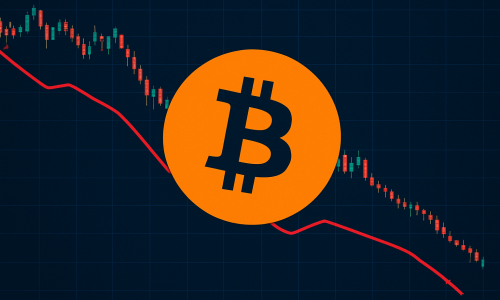Introduction
The cryptocurrency market has faced significant volatility in recent weeks, with Ethereum (ETH) at the center of the storm. According to recent market analysis, Ethereum’s price could drop to as low as $1,200 as the market reacts to U.S. economic policies under the Trump administration. The announcement of reciprocal tariffs on major trading partners has sparked concerns among investors, leading to uncertainty in both traditional and digital asset markets. This article will take a deep dive into the factors affecting Ethereum’s price movement, the role of macroeconomic policies, expert predictions, and how investors should prepare for the upcoming volatility.
Understanding Reciprocal Tariffs And Their Impact On Crypto Markets
What Are Reciprocal Tariffs?
Reciprocal tariffs are trade policies that impose equal tariffs on imports from countries that have levied duties on U.S. exports. The Trump administration has indicated a strong stance on economic protectionism, reviving fears of a global trade war. This move has significant implications not only for traditional financial markets but also for digital assets like Bitcoin and Ethereum.
Why Do Trade Tariffs Impact Ethereum?
While cryptocurrencies operate independently of traditional finance, they are not immune to global economic events. Investors treat digital assets as both risky investments and alternative stores of value, making them susceptible to geopolitical and macroeconomic factors. When trade tensions rise:
Stock markets experience increased volatility → Risk-averse investors move funds out of high-risk assets, including cryptocurrencies.
Institutional investors reduce exposure to speculative assets → Large market players hold back from investing in crypto.
The U.S. dollar strengthens due to economic protectionism → A stronger dollar can suppress the price of assets denominated in USD, including Ethereum.
Liquidity decreases in risk markets → Reduced cash flow can lead to a decline in buying momentum for cryptocurrencies.
Given these dynamics, Ethereum’s price outlook appears bearish, with experts warning of a potential slide to $1,200 in the coming weeks.
Ethereum’s Current Market Performance And Price Trends
ETH Price Analysis: Where Does Ethereum Stand?
As of February 8, 2025, Ethereum is trading at $1,450, reflecting a 7% decline in the past week. The cryptocurrency had shown signs of recovery earlier this year, reaching $1,700, but recent macroeconomic events have weighed on market sentiment. Key technical indicators show a bearish trend
Relative Strength Index (RSI): Currently at 42, indicating Ethereum is approaching oversold conditions but has room to fall further.
50-Day Moving Average: Ethereum has dropped below its 50-day moving average, a key support level for bullish traders.
Resistance and Support Levels
- Resistance: $1,500 and $1,620
- Support: $1,350 and $1,200
Ethereum’s Correlation With Bitcoin and Macroeconomic Events
Ethereum’s price movements are closely tied to Bitcoin’s performance and broader macroeconomic trends. Historically, Bitcoin leads the crypto market, and its reaction to U.S. economic policies often dictates the movement of altcoins like Ethereum. Currently, Bitcoin is struggling to maintain support above $41,000, and any further decline in BTC could accelerate Ethereum’s downward trajectory.
Expert Predictions: How Low Can Ethereum Go?
Bearish Scenarios: ETH at $1,200 or Lower?
Several market analysts predict that Ethereum could drop to $1,200 or lower if global economic uncertainty persists. According to a recent report by FXStreet, Ethereum could experience a 15-20% decline in the next few weeks.
Key factors supporting a bearish outlook:
- Macroeconomic uncertainty – The uncertainty surrounding Trump’s trade policies and the potential for retaliatory tariffs from other countries could lead to a capital flight from high-risk assets.
- Weak demand from institutional investors – Unlike previous bull markets, institutions remain cautious in adding Ethereum to their portfolios.
- Technical breakdown – A breach below $1,350 would confirm further downside potential, pushing Ethereum closer to $1,200.
Bullish Case: Can Ethereum Recover?
Despite the prevailing bearish sentiment, some analysts believe that Ethereum could bounce back if market conditions improve. Several factors could help Ethereum recover:
Federal Reserve Policy Shift: If the U.S. Federal Reserve signals interest rate cuts, risk assets, including Ethereum, could gain renewed investor confidence.
Ethereum’s Role in DeFi and NFTs: As the backbone of decentralized finance and NFT ecosystems, Ethereum remains a key player in blockchain innovation.
Increased Institutional Adoption: Large financial firms continue to explore Ethereum-based products, and renewed investment could stabilize ETH prices.
However, for Ethereum to reverse its current downtrend, it must reclaim key resistance levels at $1,500 and $1,620.
How Should Investors Prepare For Ethereum Volatility?
Risk Management: Protecting Your Investments
Given the potential downside risks, investors should consider the following strategies:
Stop-Loss Orders: Setting a stop-loss at $1,350 can help mitigate losses if Ethereum’s price continues to fall.
Diversification: Allocating funds to stablecoins or less volatile assets during periods of uncertainty can provide a hedge against market downturns.
Dollar-Cost Averaging (DCA): Long-term investors may choose to buy Ethereum in small increments instead of making large lump-sum purchases.
Watch Key Economic and Crypto Market Indicators
Investors should monitor key economic data that could impact Ethereum’s price, including:
- U.S. inflation reports and interest rate announcements from the Federal Reserve.
- Bitcoin’s price movement and institutional activity in the crypto space.
- Regulatory developments affecting Ethereum and the broader cryptocurrency industry.
Consider Alternative Investment Strategies
With Ethereum facing short-term headwinds, investors may explore alternative opportunities in the crypto market:
- Stablecoin Yield Farming: Earning passive income by staking USDT, USDC, or DAI.
- Layer 2 Solutions: Investing in Polygon (MATIC) or Arbitrum (ARB) as Ethereum scaling solutions gain adoption.
- Metaverse and Web3 Projects: Exploring projects built on Ethereum’s ecosystem, such as Decentraland (MANA) and The Sandbox (SAND).
Conclusion
Ethereum’s price forecast suggests a potential decline to $1,200, driven by geopolitical uncertainty and macroeconomic headwinds. The upcoming reciprocal tariffs announced by Trump have added further uncertainty, prompting caution among investors.
While some analysts remain bearish, long-term Ethereum supporters believe that ETH’s strong fundamentals and institutional adoption could help it recover. For now, traders and investors must remain vigilant, employ risk management strategies, and closely monitor market trends. Will Ethereum drop to $1,200, or will it rebound from current levels? The coming weeks will be crucial in determining ETH’s next major move.



